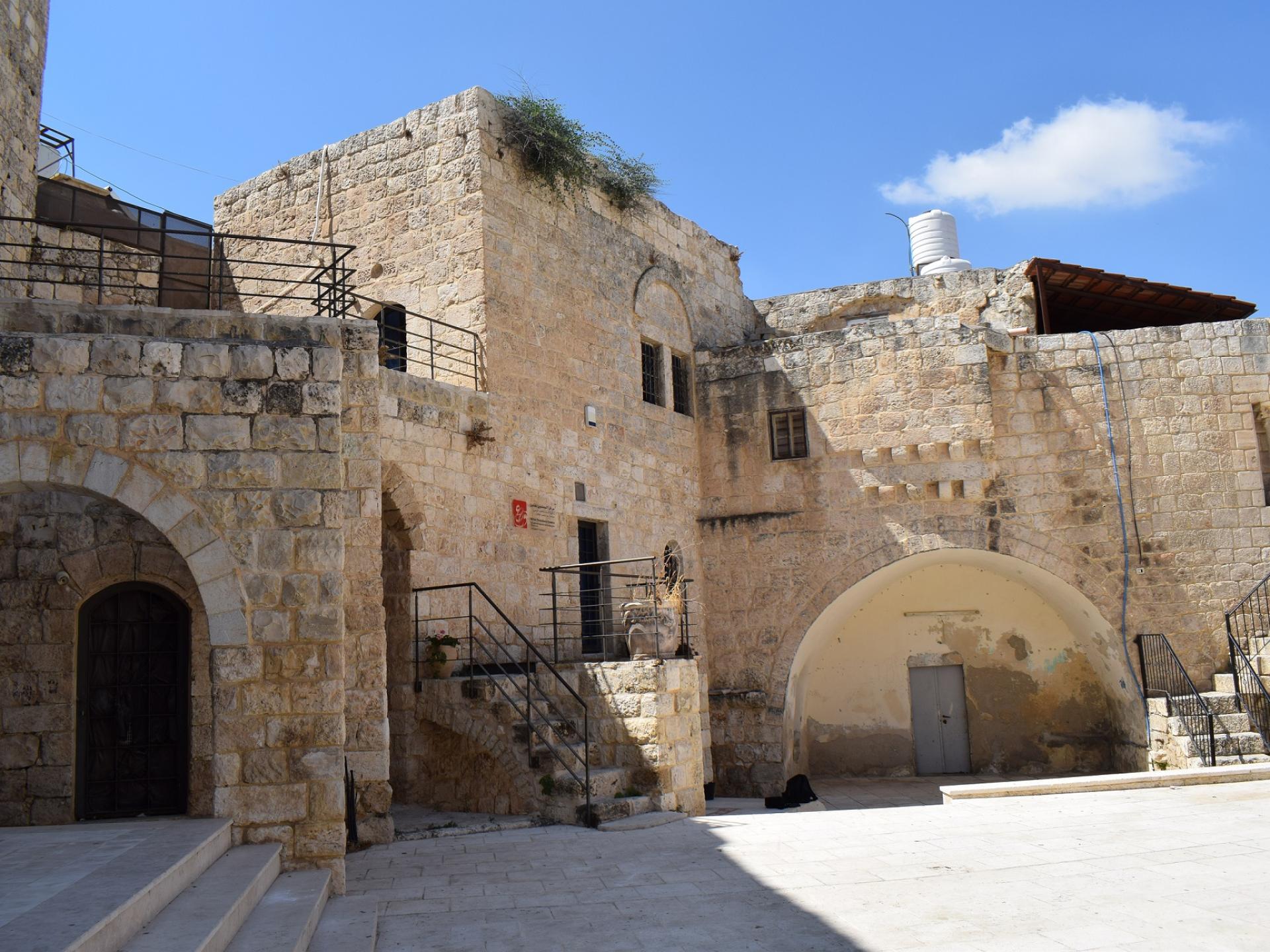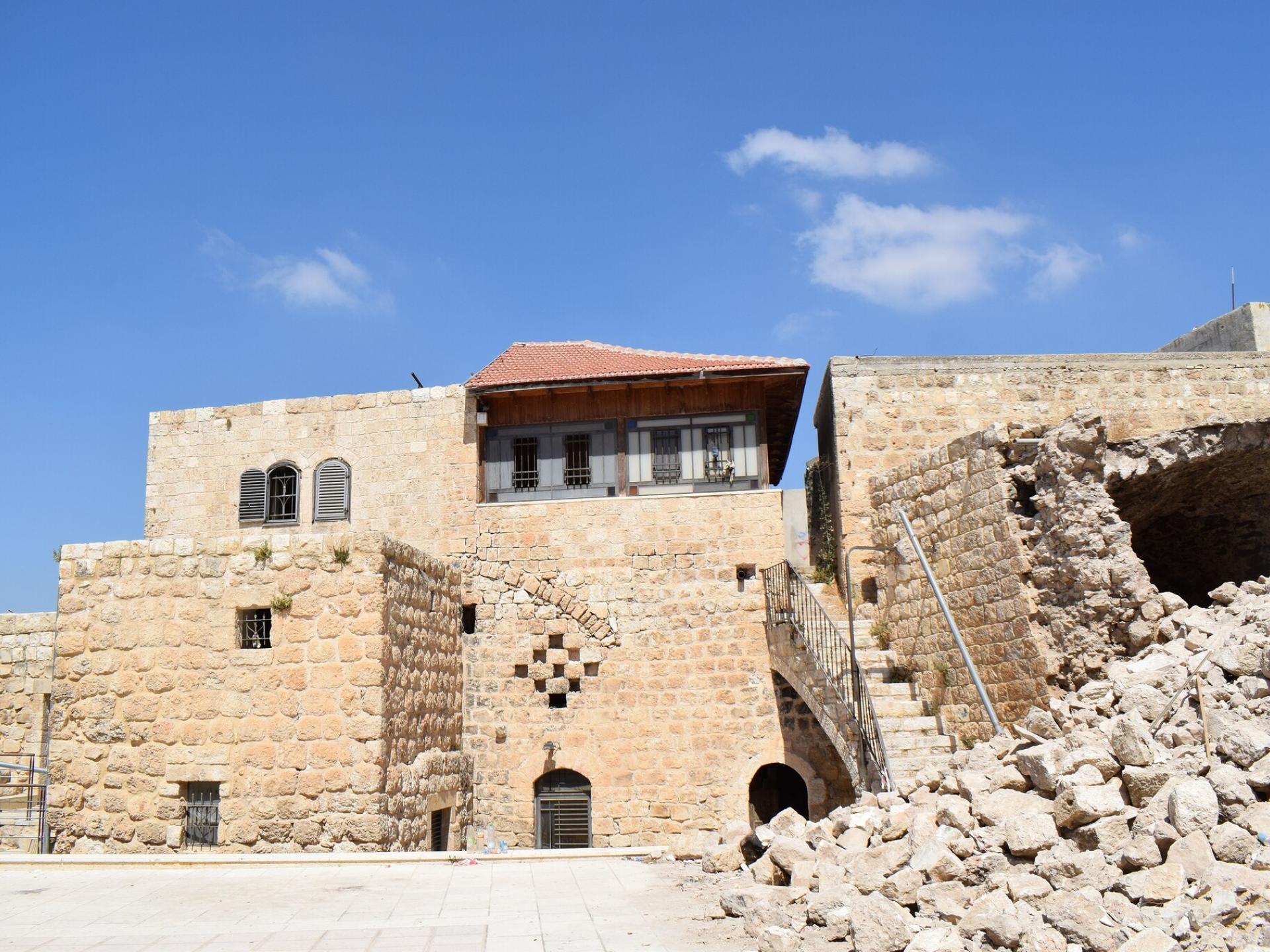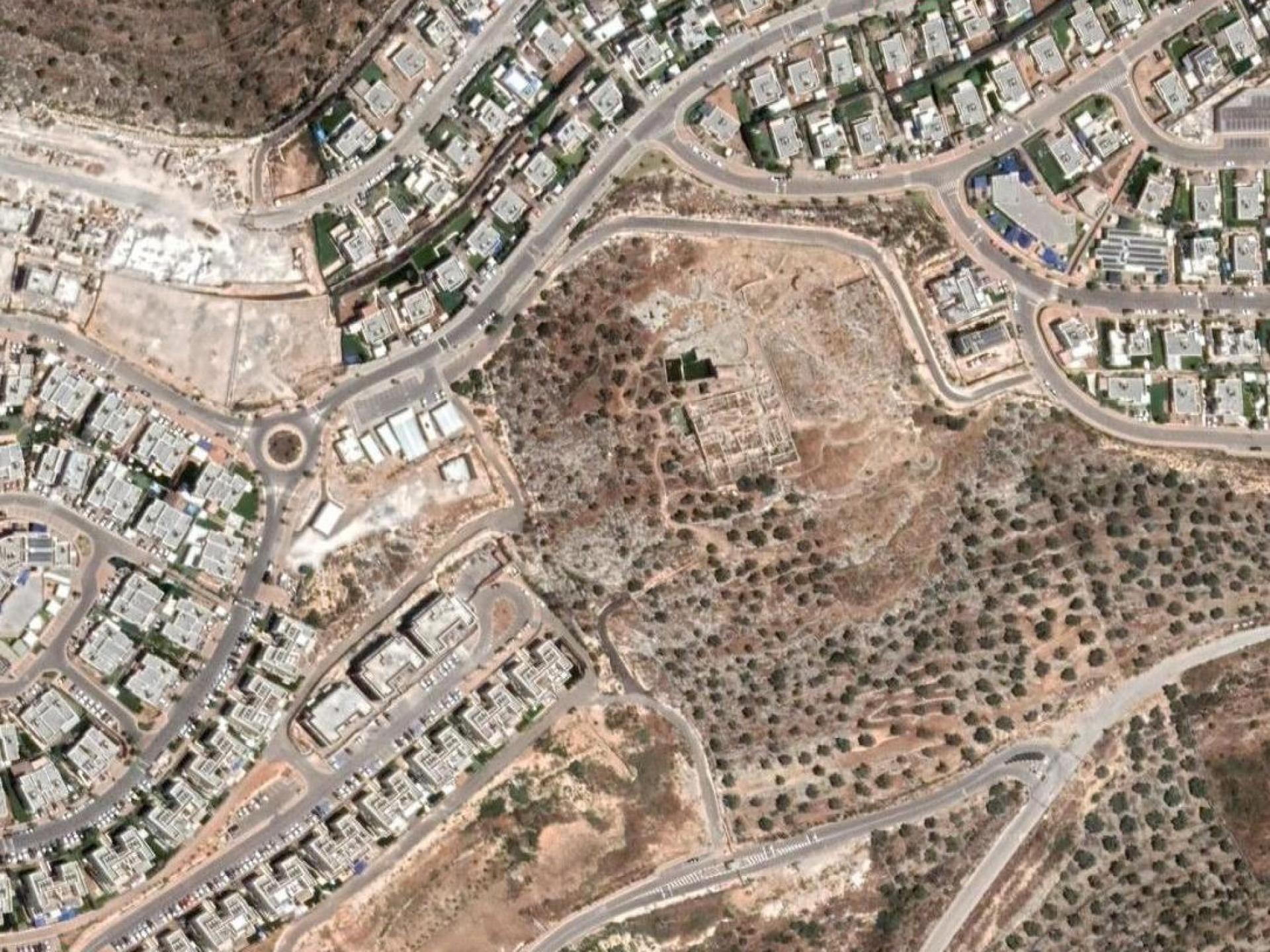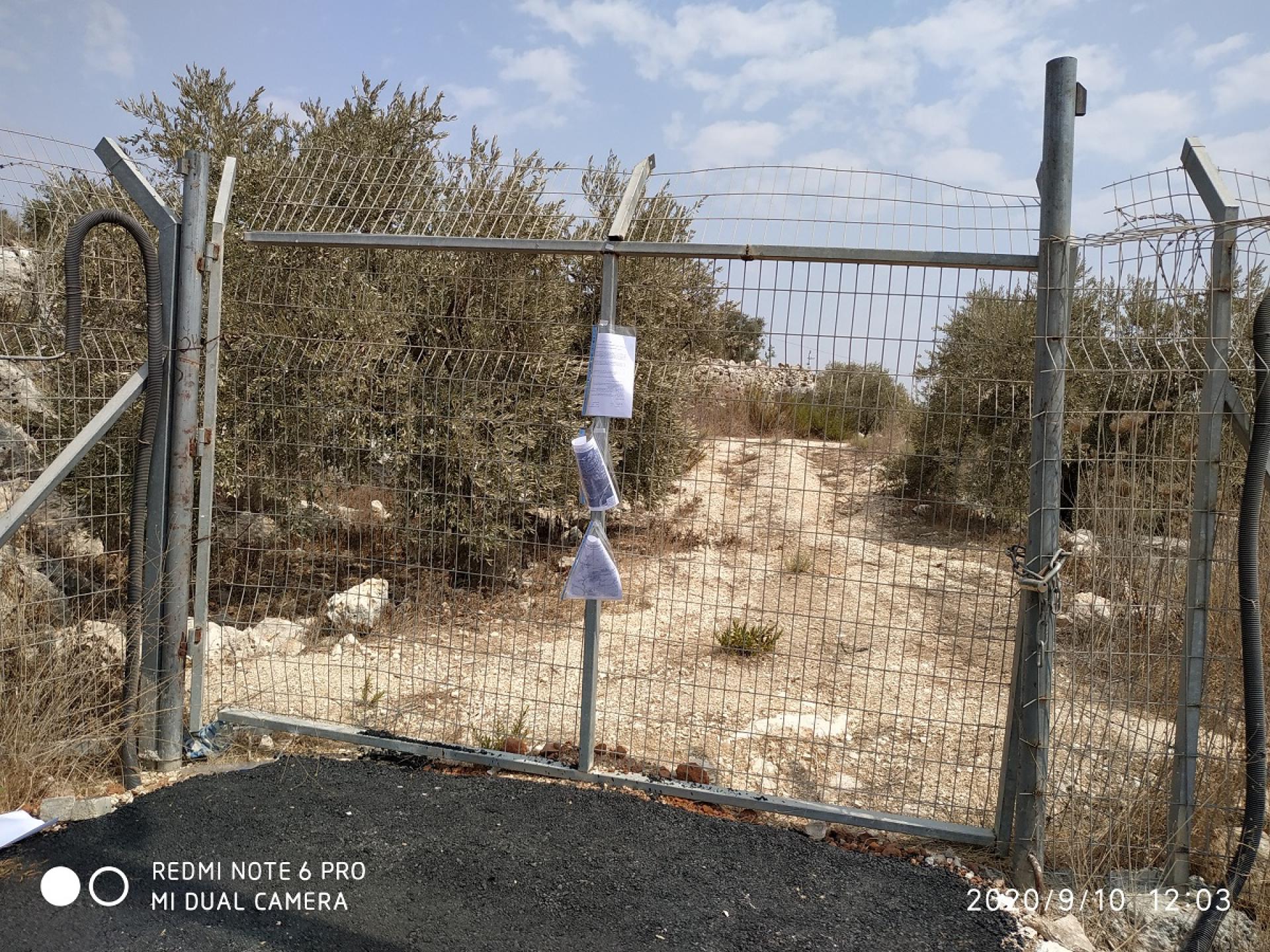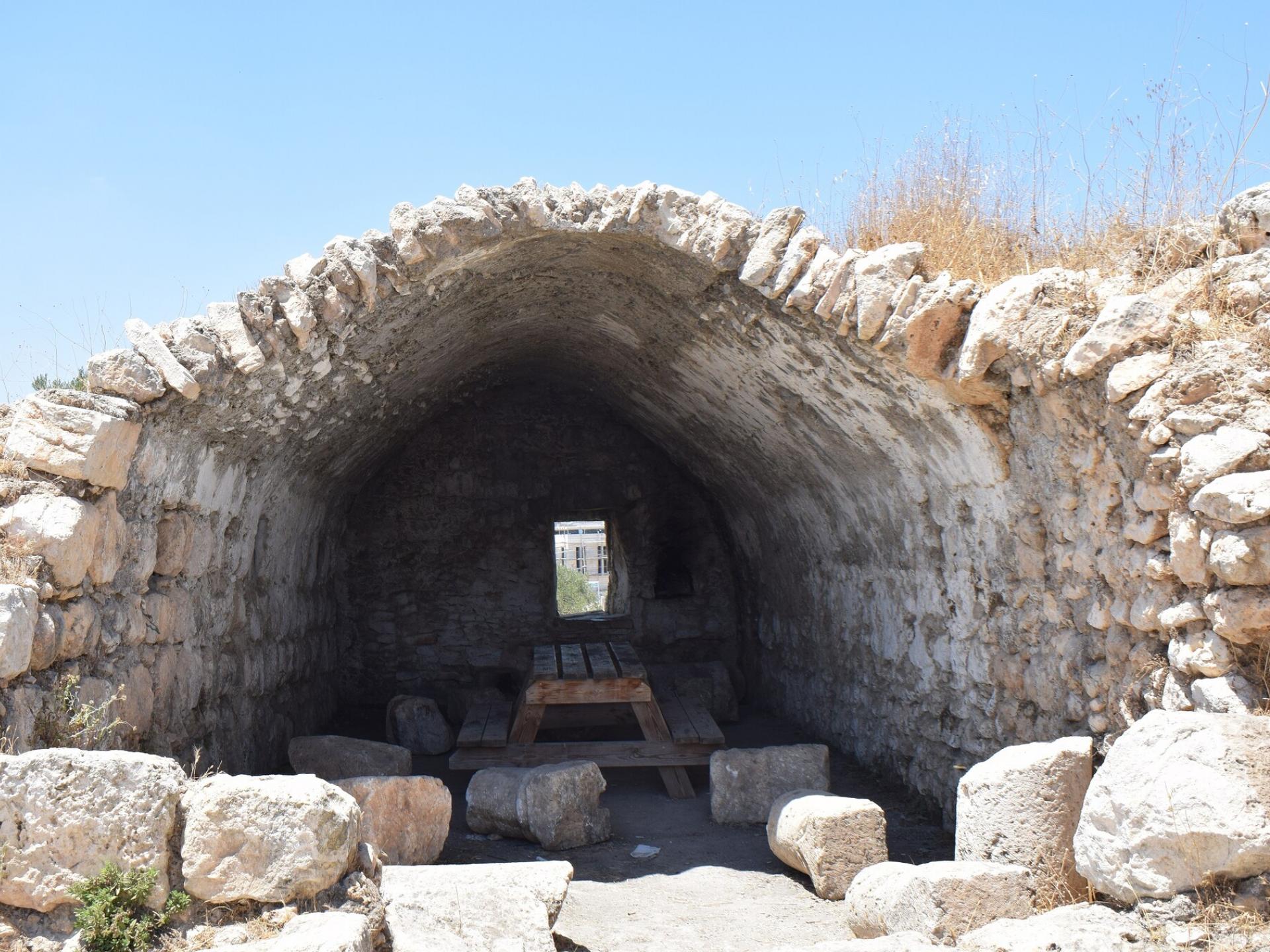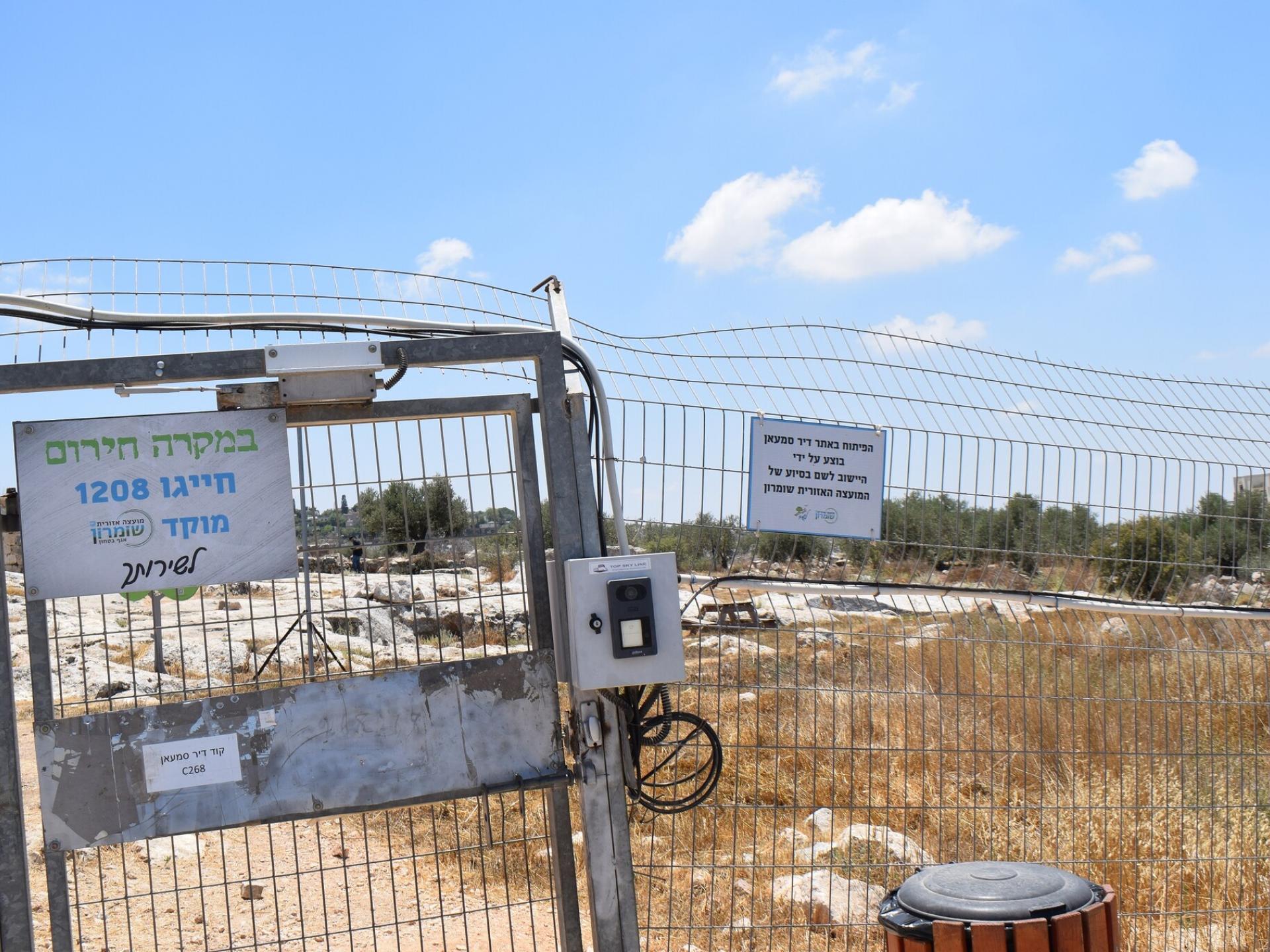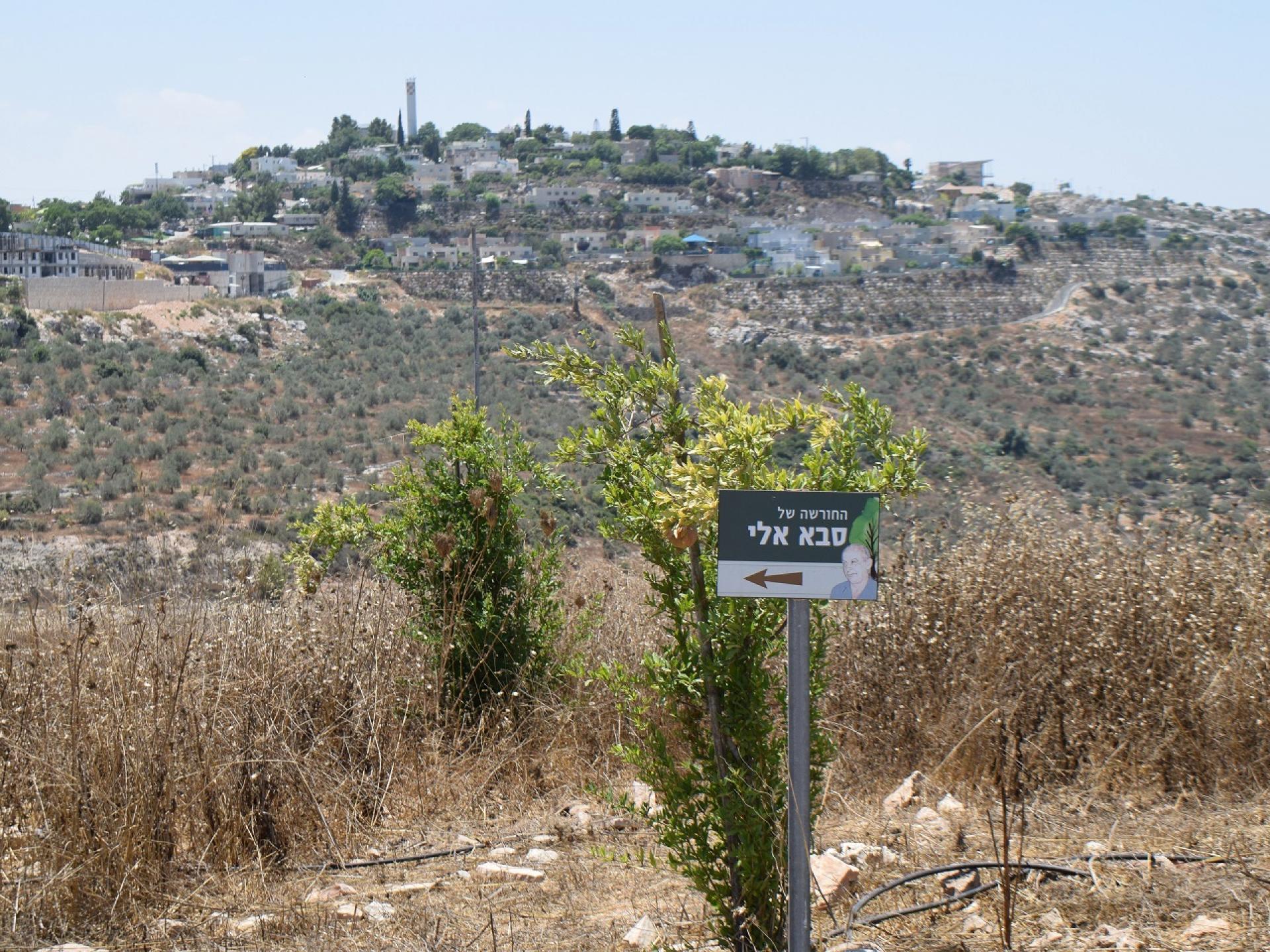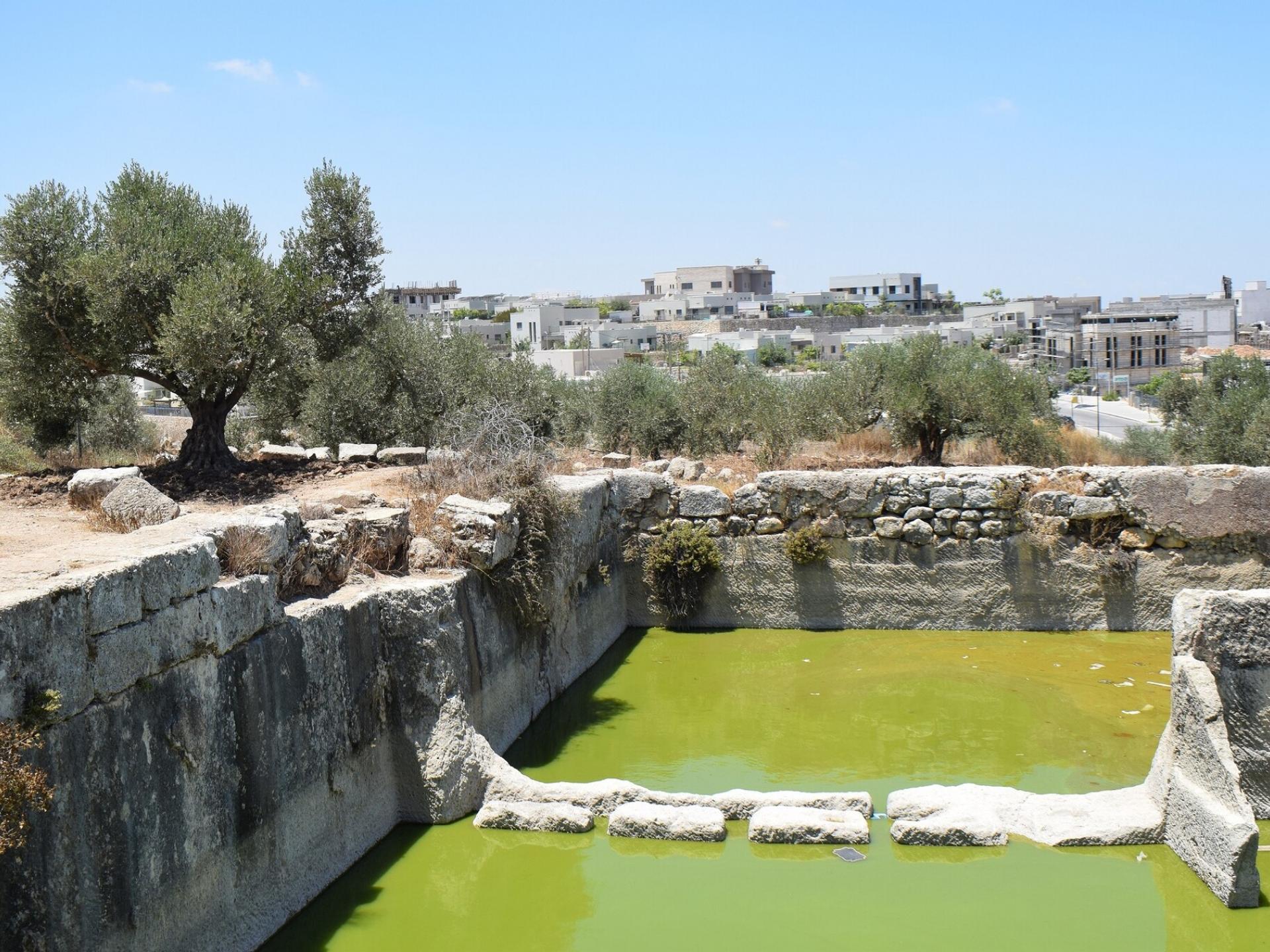Deir Sam’an - The antiquities site has been expropriated for the settlers’ benefit
The inhabitants of Ni’lin, whose livelihood comes from agriculture, were forced to alter how they made a living after the occupation and the expropriation of their land.
Before 1948 Ni’iIin possessed 57,000 dunums of agricultural land, extending from Ni’ilin to Ben Shemen forest, including the forest. 40,000 dunums were taken after the 1948 war, and approximately an additional 7,000 dunums were expropriated after 1967 to establish the settlements of Modi’in Illit, Hashmona’im and Na’aleh. A town numbering 5,000-6,000 residents was left with 10,000 dunums of agricultural land. About 93% of that land lies in Area C. Before 1967 most residents made a living from agriculture, primarily olive groves. Many residents were forced to find another form of livelihood. M., whom we met, had land and an olive grove now located between the separation wall and Hashmona’im settlement. Until last year he was still able to harvest the olives. This year he decided not to harvest because he feared the settlers and the army. He tries as much as possible to avoid confrontation with the army. Two of his children are studying at university; it’s important to him that they finish their studies with no interruption.
The village of Ni’ilin is one of 24 Throne Villages in Palestine. These villages were, in Ottoman times during the 18th and 19th centuries, political and military centers for area villages. A group of such villages were known under Ottoman rule as “Nahia.” The compound where the sheikh and his family lived in Throne Villages was architecturally grand and included impressive, decorative stone buildings surrounding an internal courtyard used by the compound’s residents. Because of their architectural singularity, Throne Villages are considered cultural landmarks in Palestine and even today provide impressive evidence of the historical era in which they played a role.
The Ni’ilin compound was renovated some 15 years ago by a Palestinian organization, Rivak – a group of architects and artists who goal is to preserve local architectural styles. The agreement between the renovation organization and the compound’s owners designates it to be devoted to public purposes for at least 15 years from the date of the renovation. When we visited four years ago the compound was maintained and operated with the owners’ agreement, at the initiative of the municipality. It included a library and classrooms. Groups met there and activities were held to benefit the community. The agreement was usually renewed. Today, 15 years after the renovation, no activities are held there and it appears neglected. A local family lives in one of the buildings. The agreement wasn’t renewed. We weren’t able to discover why.
Deir Sam’an
The antiquities site has been expropriated for the settlers’ benefit.
The road to the Alei Zahav-Leshem settlement branches before the main entrance to the settlement. A side road, fenced on both sides, ascends the hill and leads to a locked gate. The Deir Sam’an antiquities site is imprisoned within the boundaries of the Leshem settlement and bounded by a fence. The area is
surrounded by olive trees.
Deir Sam’an is a Roman and Byzantine antiquities site. P., a resident of Kafr Adik, owns the site and the surrounding olive groves. He hopes that UNESCO recognizes the antiquities site and it will be open to international tourism, including Palestinians.
When the Leshem settlement was established and expanded, a portion of the olive groves surrounding the site was expropriated for the settlement’s benefit. We first visited the site with P., the owner, in February 2017. The site was still open but intensive infrastructure work was underway for the expansion of Leshem settlement. P. showed us the spot his father died while resting while working in the grove. He described the various structures and sadly told us about artifacts such as mosaic fragments, columns and hewed stones that had been removed from the site. He also mourned the olive trees that were damaged or destroyed by construction.
Two years later the site was surrounded by a fence, as was the road P. used to reach it. The road ended at a gate that was still open and the site remained accessible to vehicles. That’s the road branching from the main road to the settlement.
At the beginning of September 2020, expropriation orders were issued for the area – on behalf of the antiquities site. They were posted on the site’s entry gate, which had been locked. In order to reach the site, P. was forced to leave his vehicle below and ascend on foot. The main entrance to the site was erected inside the settlement so Palestinians were unable to access it. P. spoke sorrowfully of how his mother, who loved to visit the place where her husband had died, can no longer reach it because the walk is too difficult for her.
Today the site has been fully taken over by the settlement and is undergoing “improvements” the settlement sees fit to introduce.

